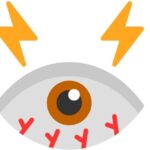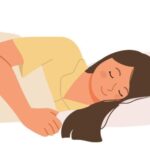Strong strands
Hair health is a vital aspect of overall wellness that often reflects a person’s nutritional status, lifestyle choices, and genetics. From the scalp to the tips of the strands, maintaining healthy hair requires attention to various factors, including diet, hair care routines, and external influences. This article delves into the components of hair health, common issues, and effective strategies for nurturing your locks.
Understanding Hair Structure
To appreciate how to care for hair, it’s essential to understand its structure:
- Hair Shaft: The visible part of the hair that extends above the scalp is made up of three layers:
- Cuticle: The outermost layer, composed of overlapping cells that protect the inner layers.
- Cortex: The middle layer, which contains fibrous proteins and pigment, contributing to strength and color.
- Medulla: The innermost layer, found in some types of hair, adding volume and texture.
- Hair Follicle: The part of the skin that contains the hair root and is responsible for hair growth. Follicles are nourished by blood vessels and are surrounded by sebaceous glands, which produce oil to keep hair moisturized.
Factors Affecting Hair Health
Several internal and external factors can influence hair health:
1. Nutrition
A well-balanced diet plays a crucial role in maintaining healthy hair. Key nutrients include:
- Proteins: Hair is primarily made of a protein called keratin. Consuming adequate protein from sources like fish, chicken, beans, and nuts is essential for growth and strength.
- Vitamins:
- Vitamin A: Supports the production of sebum, the scalp’s natural oil, which moisturizes hair.
- Vitamin C: Essential for collagen production, which strengthens hair and supports the hair follicle.
- Vitamin D: Linked to the hair growth cycle; deficiency may lead to hair loss.
- Biotin (Vitamin B7): Promotes healthy hair growth and reduces hair loss.
- Minerals:
- Iron: Deficiency can lead to hair loss due to insufficient oxygen supply to hair follicles.
- Zinc: Important for hair tissue growth and repair.
2. Hair Care Practices
Proper hair care routines can significantly affect hair health:
- Washing Frequency: Overwashing can strip hair of natural oils, while infrequent washing can lead to buildup. Finding a balance based on hair type is key.
- Shampoo and Conditioner Selection: Choose products that suit your hair type (oily, dry, curly, etc.) and avoid harsh sulfates and parabens.
- Heat Styling: Excessive use of heat styling tools can damage the cuticle and lead to breakage. Use heat protectants and limit styling frequency.
- Brushing Techniques: Gently detangle hair using a wide-tooth comb or a brush designed for your hair type to prevent breakage.
3. Scalp Health
A healthy scalp is essential for healthy hair growth:
- Regular Exfoliation: Exfoliating the scalp can remove dead skin cells and promote circulation, supporting hair growth.
- Hydration: Keeping the scalp hydrated is important. Use oils or leave-in conditioners to maintain moisture.
- Addressing Dandruff: Treat dandruff with appropriate shampoos to prevent itching and irritation, which can hinder hair growth.
4. Environmental Factors
External elements can adversely affect hair health:
- Sun Exposure: UV rays can damage hair, making it dry and brittle. Wearing hats or using UV-protectant hair products can help.
- Pollution: Environmental pollutants can accumulate on the scalp and hair, leading to damage. Regular washing and clarifying treatments can mitigate this.
- Chlorine and Salt Water: These can strip hair of moisture and lead to brittleness. Rinse hair after swimming and consider using a protective swim cap.
5. Stress and Hormonal Changes
Both physical and emotional stress can impact hair health:
- Stress: High stress levels can lead to conditions like telogen effluvium, where hair follicles enter a resting phase, causing shedding.
- Hormonal Changes: Pregnancy, menopause, and hormonal imbalances can affect hair growth and thickness. Consulting a healthcare provider can help manage these changes.
Common Hair Issues
Understanding common hair problems is essential for effective treatment and maintenance. Here’s a detailed look at various hair issues, their causes, symptoms, and potential solutions:
1. Hair Loss (Alopecia)
Types:
- Androgenetic Alopecia: Also known as male or female pattern baldness, this hereditary condition leads to gradual thinning and loss of hair.
- Telogen Effluvium: A temporary condition often triggered by stress, illness, or hormonal changes, resulting in widespread shedding.
- Alopecia Areata: An autoimmune condition that causes sudden hair loss in patches.
Symptoms:
- Thinning hair on the scalp.
- Bald patches.
- Excessive shedding during brushing or washing.
Solutions:
- Topical Treatments: Minoxidil (Rogaine) can promote hair regrowth.
- Oral Medications: Finasteride (Propecia) may help with male pattern baldness.
- Lifestyle Changes: Reducing stress and ensuring a balanced diet can support hair health.
- Consultation: A dermatologist can provide personalized treatment options based on the type of hair loss.
2. Dandruff
Description: Dandruff is characterized by flaky, itchy scalp skin, often caused by dry skin, fungal infections, or sensitivity to hair products.
Symptoms:
- White or yellowish flakes on the scalp and shoulders.
- Itching or irritation on the scalp.
Solutions:
- Medicated Shampoos: Products containing ketoconazole, selenium sulfide, or zinc pyrithione can effectively reduce dandruff.
- Tea Tree Oil: Known for its antifungal properties, diluted tea tree oil can help alleviate symptoms.
- Regular Washing: Keeping the scalp clean can prevent buildup and irritation.
3. Split Ends
Description: Split ends occur when the hair shaft frays or splits, often due to damage from heat styling, chemical treatments, or environmental factors.
Symptoms:
- Frayed or broken ends of hair strands.
- Increased tangling and breakage.
Solutions:
- Regular Trims: Getting hair trimmed every 6-8 weeks can prevent split ends from worsening.
- Moisturizing Products: Using deep conditioning treatments can help maintain hair elasticity and prevent damage.
- Heat Protection: Always use heat protectants when styling hair with heat tools.
4. Dry and Brittle Hair
Description: Dry hair lacks moisture, leading to a dull appearance and increased susceptibility to damage.
Causes:
- Overwashing, heat styling, and environmental factors can strip hair of natural oils.
- Lack of proper nutrition or hydration.
Symptoms:
- Dull, lifeless hair.
- Increased breakage and frizz.
Solutions:
- Hydrating Treatments: Use moisturizing shampoos and conditioners, as well as deep conditioning masks regularly.
- Limit Heat Styling: Reduce the use of heat tools, or use them on a low setting.
- Healthy Diet: Incorporate foods rich in omega-3 fatty acids, vitamins, and minerals.
5. Oily Hair and Scalp
Description: Oily hair is a result of excess sebum production by the scalp, leading to greasy hair and a potentially uncomfortable feeling.
Causes:
- Hormonal changes, genetics, and improper hair care routines can lead to increased oiliness.
Symptoms:
- Greasy or shiny hair, especially at the roots.
- Flat or lifeless appearance.
Solutions:
- Frequent Washing: Use a gentle shampoo to cleanse the scalp regularly, ideally every other day.
- Avoid Heavy Products: Steer clear of heavy oils or creams that can exacerbate oiliness.
- Scalp Exfoliation: Use a gentle exfoliating scrub to remove excess oil and buildup.
6. Frizz
Description: Frizz occurs when hair is dry or damaged, causing strands to lift and appear unruly, often due to humidity or lack of moisture.
Causes:
- Environmental factors, lack of moisture, and excessive heat can contribute to frizz.
Symptoms:
- Hair appears puffy or lacks definition.
- Difficulty in styling and managing hair.
Solutions:
- Anti-Frizz Products: Use serums or oils specifically designed to smooth and control frizz.
- Hydrating Treatments: Regular deep conditioning and moisturizing treatments can improve hair texture.
- Avoid Over-Washing: Too frequent washing can strip moisture, exacerbating frizz.
7. Color Damage
Description: Color-treated hair can become damaged, leading to dryness, breakage, and fading of color.
Causes:
- Chemical processes involved in coloring can weaken the hair structure.
Symptoms:
- Dullness or faded color.
- Increased dryness or brittleness.
Solutions:
- Color-Safe Products: Use shampoos and conditioners formulated for color-treated hair.
- Deep Conditioning: Regularly use deep conditioning masks to restore moisture.
- Limit Washing: Reduce washing frequency to maintain color and prevent further damage.
Common hair issues can affect anyone and may arise from a variety of factors, including genetics, environmental influences, and hair care practices. Understanding these issues and their solutions is essential for maintaining healthy hair. By adopting a proactive approach—incorporating proper care routines, using suitable products, and addressing any underlying health concerns—you can achieve and maintain vibrant, healthy hair. If persistent issues arise, consulting a healthcare professional or dermatologist can provide tailored solutions for your specific hair concerns.
Effective Strategies for Healthy Hair
- Balanced Diet: Focus on incorporating a variety of nutrient-dense foods to support hair health.
- Proper Hair Care Routine: Tailor your routine to your hair type, avoiding excessive heat and harsh chemicals.
- Scalp Care: Invest time in maintaining a healthy scalp through regular cleansing and hydration.
- Limit Stress: Engage in stress-reducing activities such as yoga, meditation, or regular exercise.
- Stay Hydrated: Drink plenty of water to keep both your body and hair hydrated.
Maintaining healthy hair involves a holistic approach that encompasses nutrition, proper care, and attention to environmental factors. By understanding the components of hair health and implementing effective strategies, individuals can enhance their hair’s strength, appearance, and overall vitality. Whether dealing with hair issues or striving for luscious locks, adopting a comprehensive hair care routine is essential for achieving and maintaining beautiful hair.
Check other articles in same topics here








